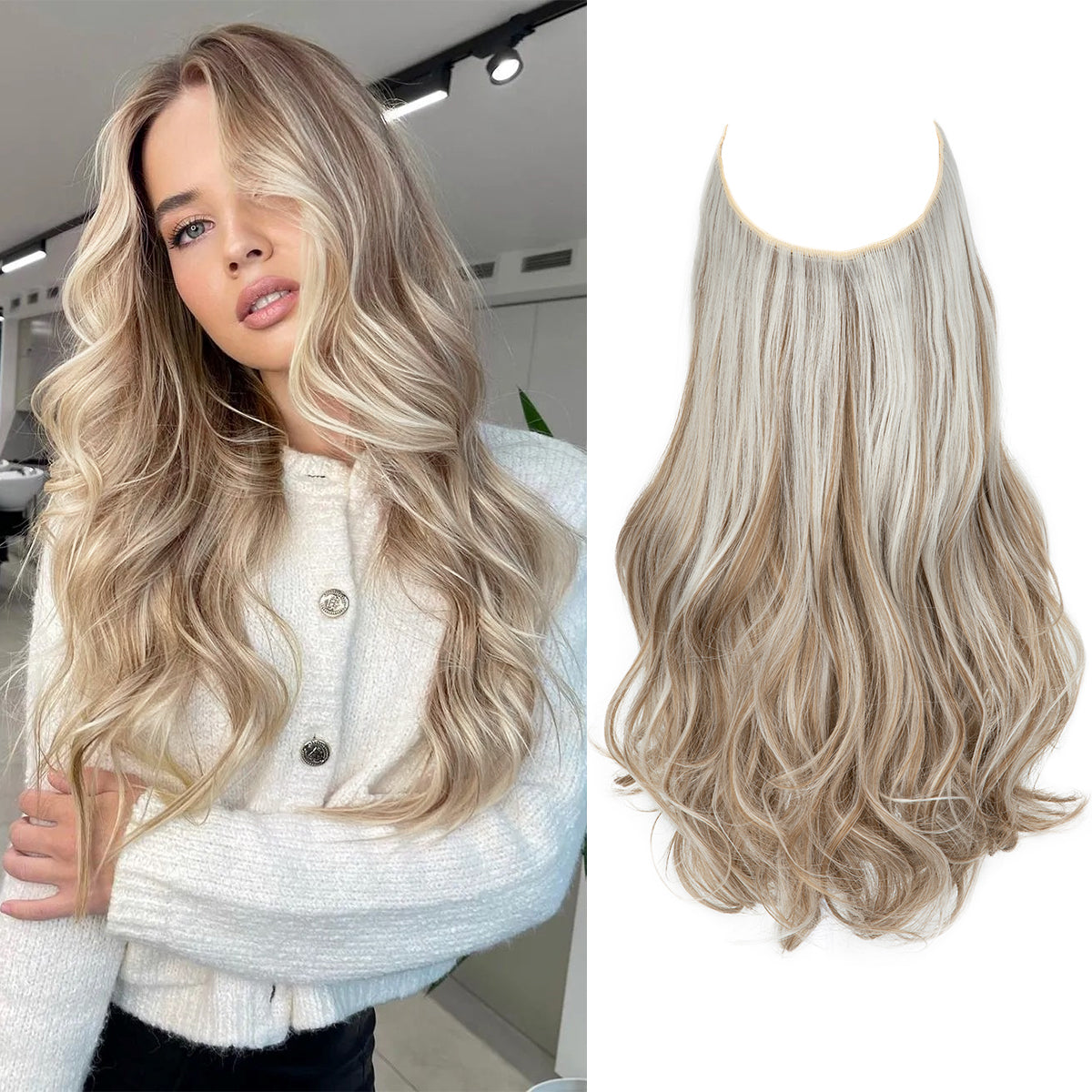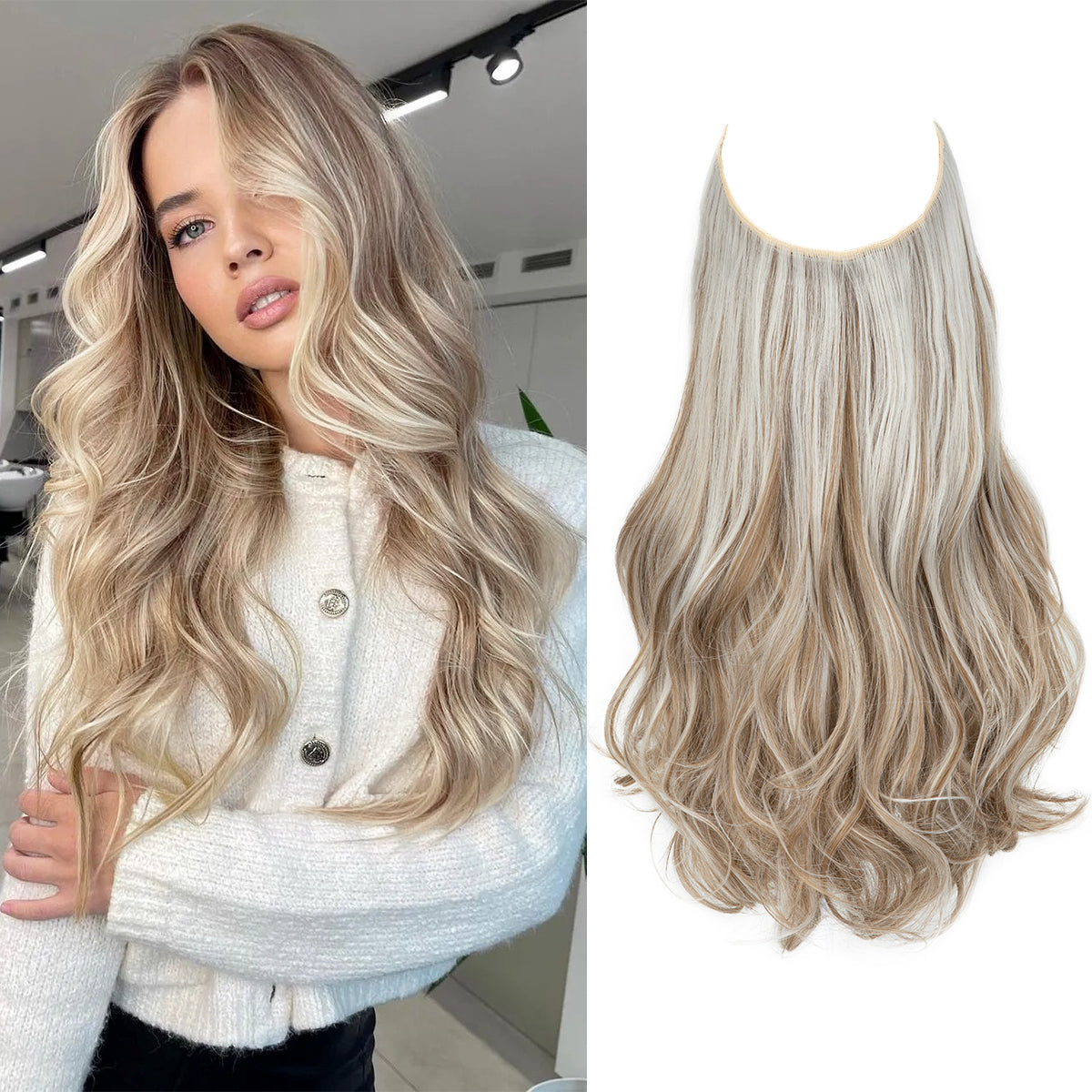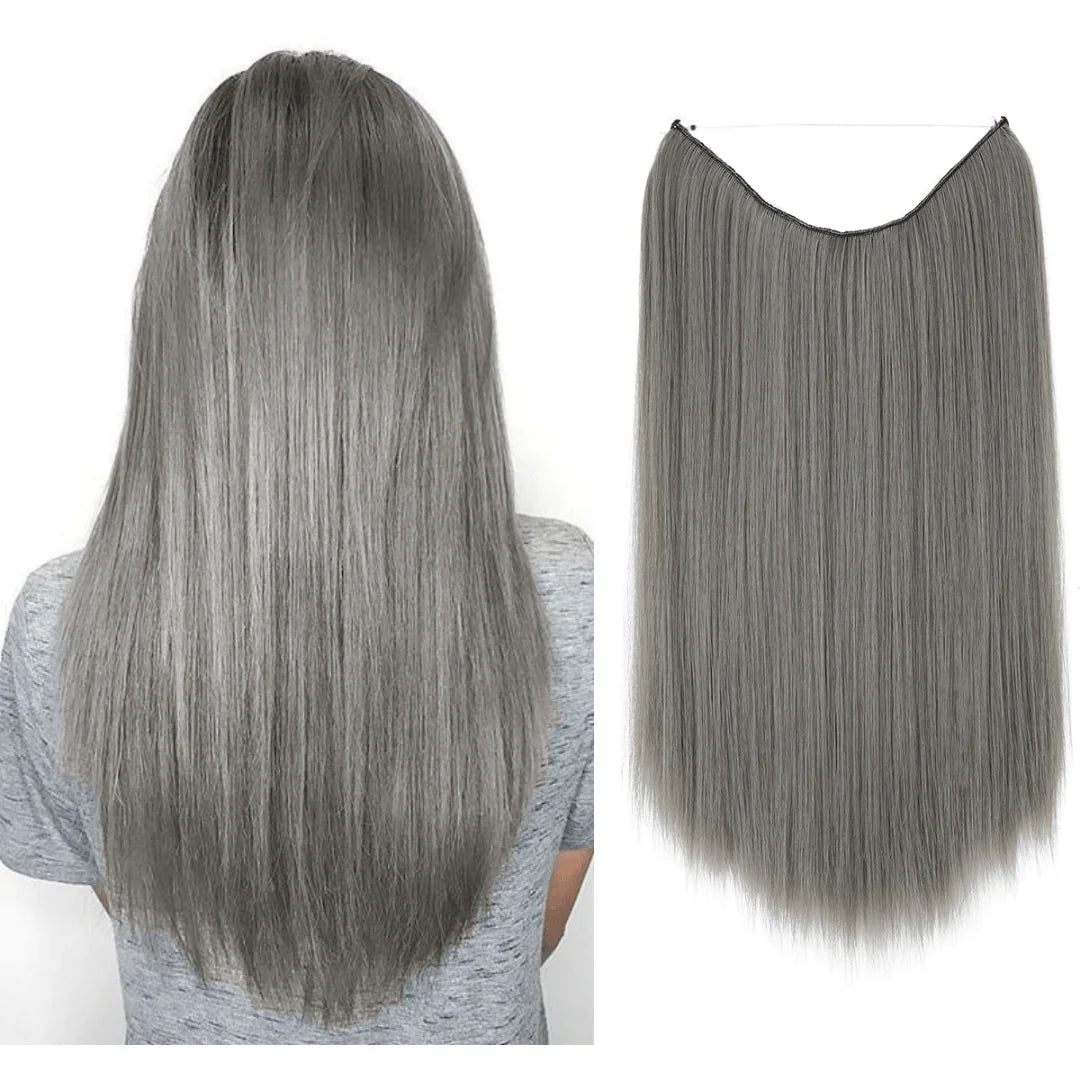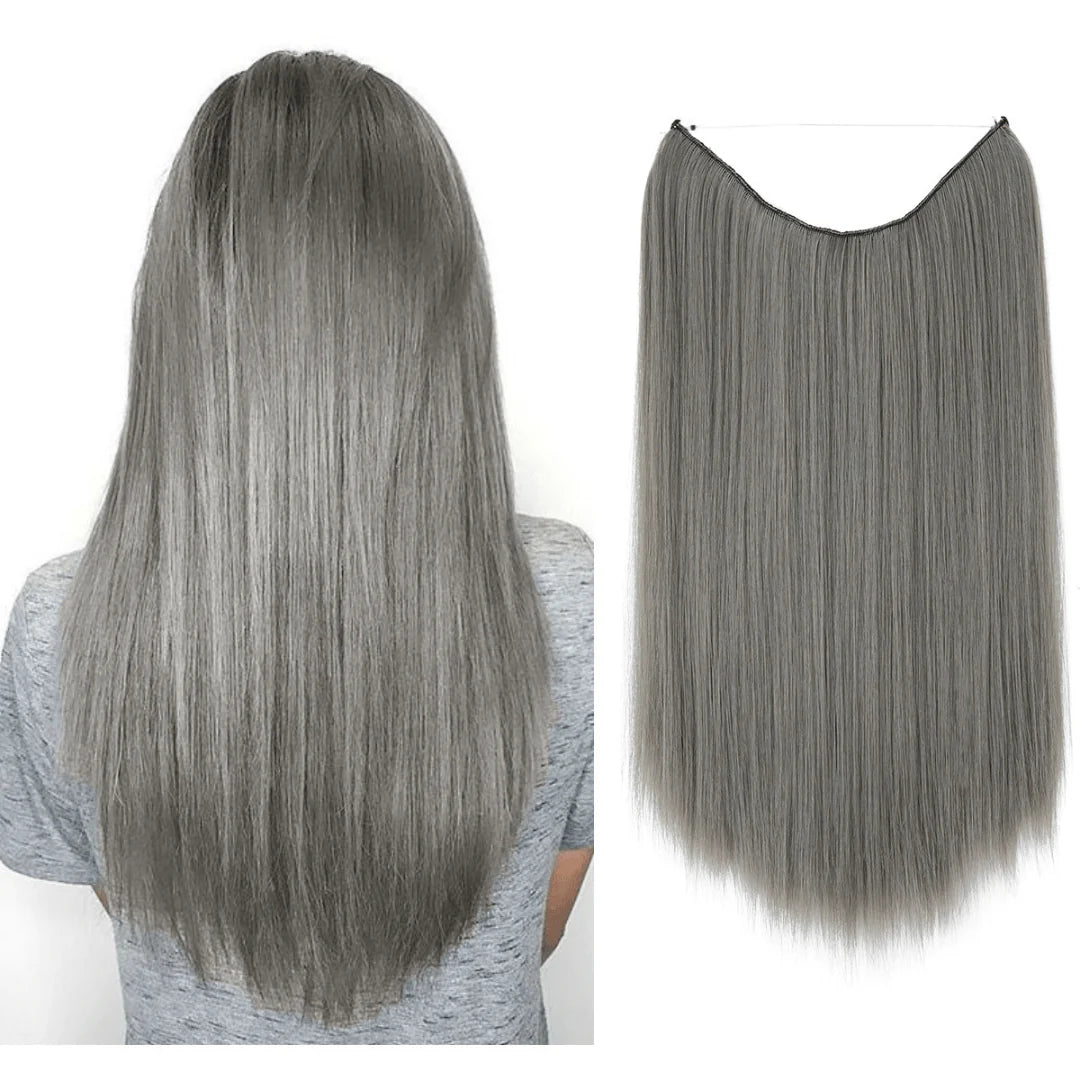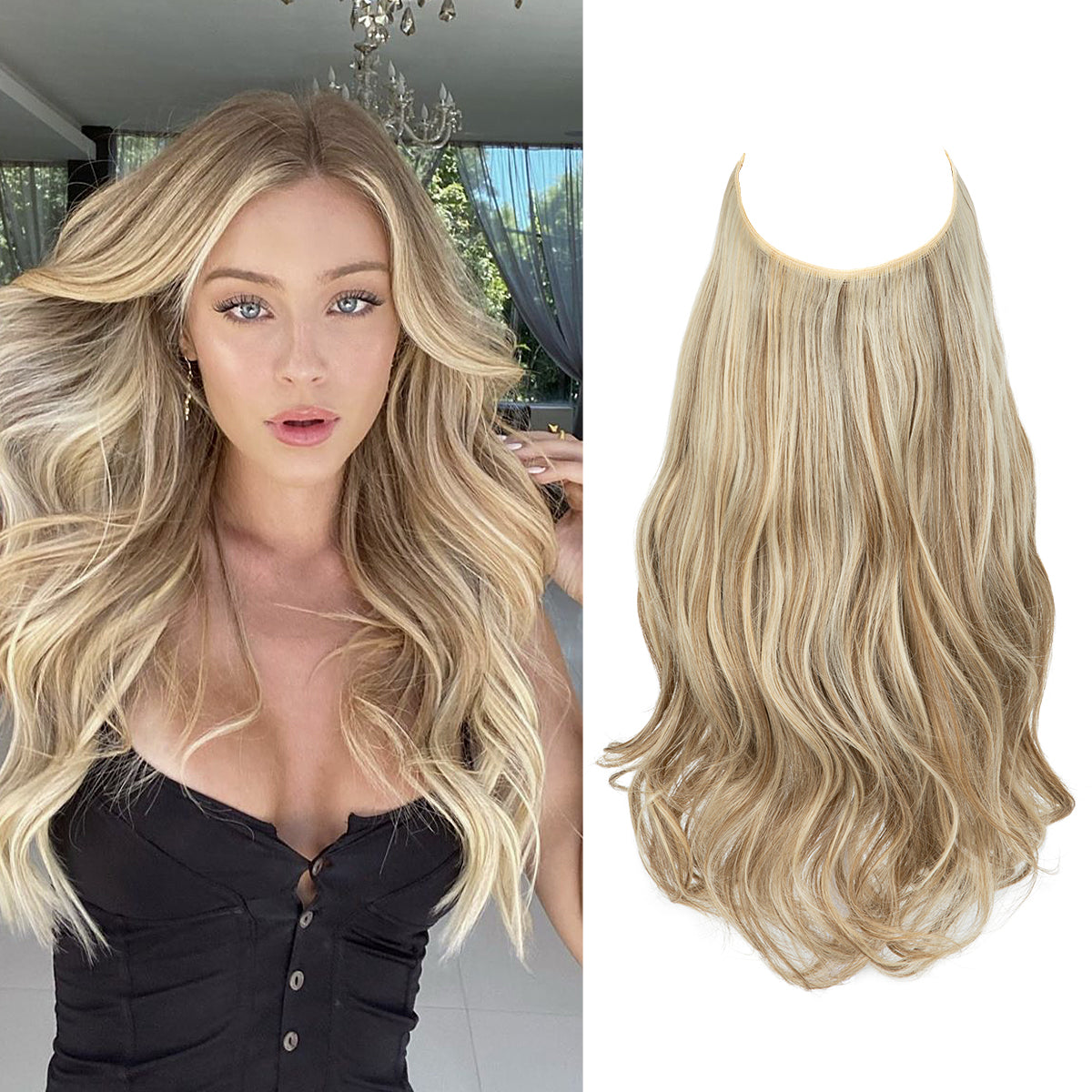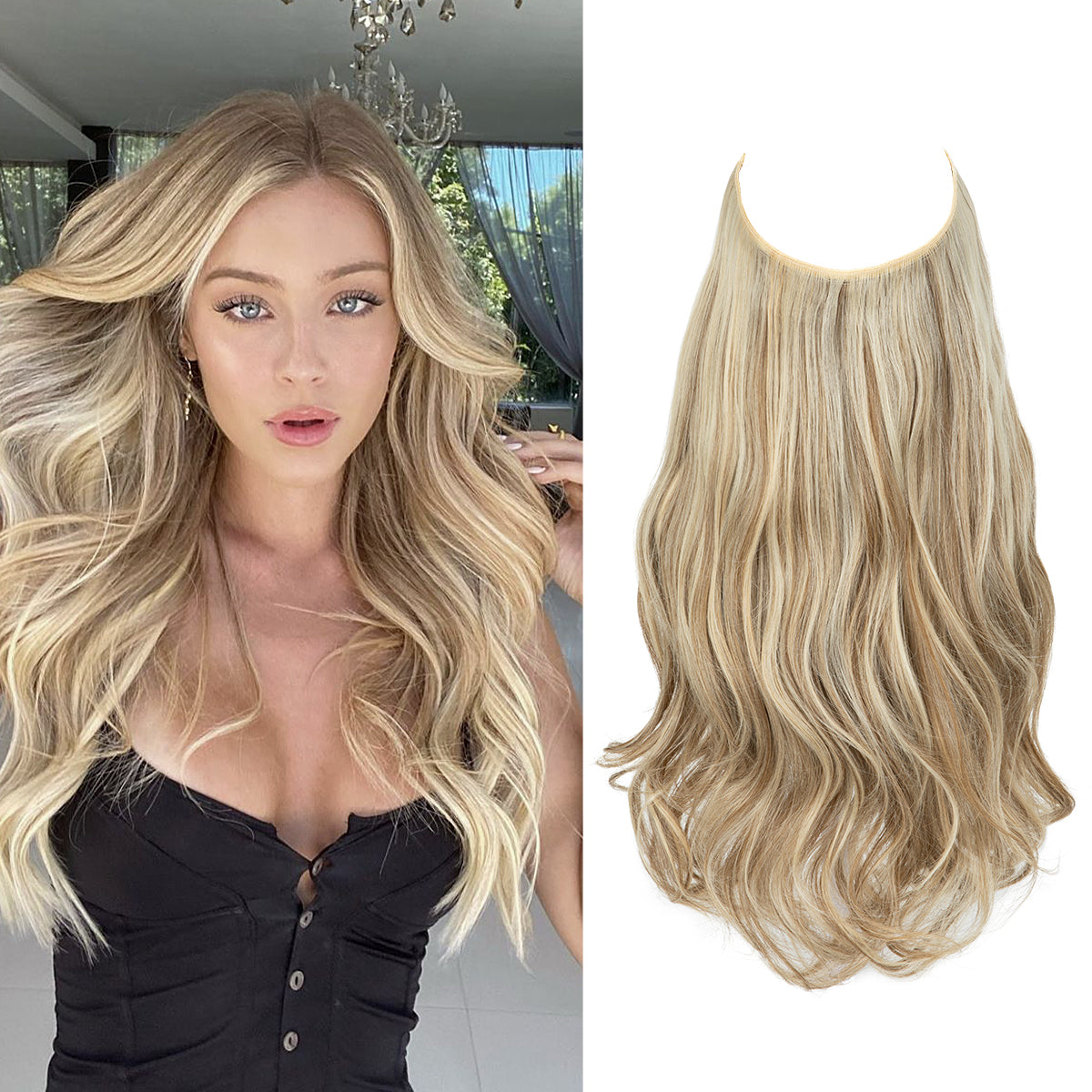
Halo hair extensions provide the perfect solution for people who want more volume and length without complicated maintenance. These extensions are simple to wear, and they transform your appearance instantly.
A perfect blend of extensions transforms your appearance from "she's wearing extensions" to "her hair looks amazing." This guide provides step-by-step instructions to achieve a perfect finish that requires no prior experience and takes minimal time.
People with thin or fragile hair have probably wondered this question multiple times. Everyone desires fuller and longer hair that is thicker in appearance, but we do not want to sacrifice our actual hair.
This article provides an accurate explanation of how halo extensions affect your natural hair, breaks down authentic expert analysis of extension types, and evaluates their ability to provide damage-free solutions to hair problems.
Do Halo Extensions Really Damage Hair?
No, halo extensions do not damage your natural hair. Unlike clip-ins or glue-in methods, halos sit gently on your head using a thin, invisible wire—there’s no pulling, tugging, or breakage. They’re one of the safest extension types for everyday wear.
How Halo Extensions Work
Halo extensions are a temporary way to add length and volume without the damage. They’re called “halo” because the extension weft forms a circle, kind of like a headband.
Here’s what makes them unique:
- No Direct Attachment: There's nothing attached to your actual hair. The wire works like a headband that sits under your hair, and your natural hair covers it up to make everything look seamless.
- Even Weight Distribution: Instead of pulling on one spot like clip-ins do, the weight gets distributed across your whole head. Way less stress on your roots.
- Natural Blending: Once it's on, just use your fingers to pull some of your hair over the wire. Takes like two seconds to make it look natural.
- No Commitment: Put them on when you want longer hair, take them off when you don't. Perfect if you're not ready for permanent extensions or you only want the extra length for special events.

Potential Hair Damage Concerns
Halo extensions are gentler than most, but they’re not completely risk-free, especially if worn too tightly, too heavily, or too often. Here's what to watch for:
- Tension Considerations: The wire sits on your head, not your hair, which is better. But if it's too tight or heavy, it can still put pressure on your scalp over time.
- Traction Issues: No clips tugging at your hair is great, but constantly adjusting the halo or wearing it every single day can still mess with your roots.
- Breakage Factors: Most breakage happens where the wire sits against your hair, especially if you yank it off or use too much heat when styling.
- Scalp Irritation: If it doesn't fit right, your hair gets tangled under the wire, or you get sweaty, your scalp might get itchy or red.
- Long-term Wear Effects: Wearing it all the time flattens the same spots on your head, which can break your hair or slow down growth. This is especially true if your hair's already thin.
How to Not Wreck Your Extensions
Halo extensions can make your hair look amazing—but you need to wear them right or you'll mess up your natural hair. Here's what actually works:
- Start Clean: Wash and dry your hair first. If it's messy or frizzy, smooth it out a bit so the halo blends better.
- Get the Sizing Right: It should feel snug but not tight. If it's squeezing your head or sliding around, it's going to cause problems.
- Choose the Right Weight: If your hair's thin, get the lightest halo you can find. Heavy extensions might look fuller but they'll stress out your roots.
- Place It Correctly: Section off the top of your hair from ear to ear. Put the halo about an inch back from your hairline, sitting above your ears like a headband. Then pull your hair over the wire to hide it.
- Reposition Daily: Don't sleep in it. Take it off every night so your scalp can relax and you're not putting pressure on the same spots all the time.
Wearing a halo the right way only takes a few minutes, and it goes a long way in protecting your strands.
Special Considerations for Different Hair Types
Every hair type needs something a little different. Here’s how to tailor your halo wear to your hair’s unique needs:
- Fine Hair: Stick to ultra-light halos. Thicker or heavier sets can be too much for delicate strands. Avoid daily wear and check for pressure spots near the crown.
- Curly Hair: Choose a halo that matches your curl pattern. If not, you’ll need to heat-style both your natural hair and the extension, so either style both or pick a curl-friendly halo to save your strands.
- Damaged or Processed Hair: Be gentle. Use leave-in conditioner and heat protectant before any styling. Wear only lightweight halos and limit how long you wear them
- Short Hair: Blending is key. Choose layered extensions that mimic your haircut and stick to lighter halos to avoid pulling at your roots.

Halo Extensions vs. Other Extension Methods
Usually hair extensions come with damage risks, especially if they attach directly to your strands or scalp. Halo extensions stand out because they skip the glue, clips, and tension altogether.
Here’s how halo extensions compare to other popular methods:
- Installation Stress: Most traditional extensions need to be applied strand-by-strand or in wefts, often taking hours and involving heat, glue, or clamping tools. Halo extensions slip on in seconds—no stress or tools needed
- Removal Process: Removing tape-ins or fusion extensions can pull and even tear hair. Halos? You just lift them off gently—zero damage.
- Impact Over Time: Long-term wear of permanent extensions can weaken roots and cause thinning. Halo extensions are ideal for daily or occasional use without the long-term stress.
Hair Extension Damage Comparison Table
| Extension Type | Attachment Method | Pull on Hair | Installation Stress | Removal Risk | Daily Wear Impact |
|---|---|---|---|---|---|
| Halo | Wire (no contact) | Minimal | None | None | Very Low |
| Clip-in | Clips on strands | Moderate | Low | Low–Moderate | Low–Moderate |
| Tape-in | Adhesive at the roots | High | High (Glue used) | High | High |
| Fusion/Keratin | Heat & glue bonds | High | Very High | Very High | High |
| Bead/Weft | Beads/clamps | High | High | High | High |

| Halo | Clip-in | Glue/Tape-in | Sew-in Weaves | |
|---|---|---|---|---|
| Damage | No damage sits on an invisible wire | Low risk if worn occasionally, but frequent use can cause breakage | Adhesive may weaken hair over time, especially with removal | Tension from braids can cause hair breakage |
| Installation Time | Under 1 minute | 5-15 minutes | 30-60 minutes—requires professional application | 2-4 hours—salon required |
| Comfort Level | Lightweight, no headaches | Can feel bulky with multiple wefts | Tape can feel tight at first | Can feel heavy and tight, especially after installation |
| Styling Freedom | Can be curled, straightened & styled easily | Very flexible for styling | Heat should be kept away from adhesive areas | Styling is limited by track placement |
| Best for Beginners | Easiest option—no skills required | Easy once placement is learned | Requires professional application & removal | Requires professional salon work |

Common Mistakes That Shorten Extension Life
Even the best halo hair extensions won’t last if they’re not cared for properly. Avoid these common mistakes to keep your extensions in great shape:
- Excessive Heat Styling: Using hot tools too often, especially without heat protectant, can dry out the hair and cause split ends over time.
- Wearing While Swimming or Showering: Water—especially from pools or the ocean—can damage the hair fibers and weaken the band. Always remove your extensions before swimming or bathing.
- Sleeping in Extensions: Wearing your extensions to bed causes friction, tangling, and unnecessary stress. Always take them off before sleep to avoid damage.
- Using Regular Hair Products
Products made for natural hair often contain sulfates and alcohol, which can dry out and damage extensions. Choose formulas made specifically for extension care to keep the hair soft and healthy.
Final Thoughts
Halo extensions are your safest option for longer, fuller hair without damage. No glue, clips, or tape pulling at your hair. Great for fine or damaged hair since there's no stress on individual strands. Just wear them right and take them off at night.
If you’re looking for a high-quality option that blends seamlessly and wears beautifully, we highly recommend checking out our halo hair extensions collection.
Related Products
Ivory Blonde Wavy
Dark Grey Straight
Bahama Beige Wavy

Josef Mohamed is a Content Marketer and Web Designer with over 6 years of experience.He brings a wealth of knowledge to his work, making him a reliable source for readers interested in practical insights about beauty. His writing style is straightforward, aiming to provide real facts and avoid common myths in the beauty industry.




